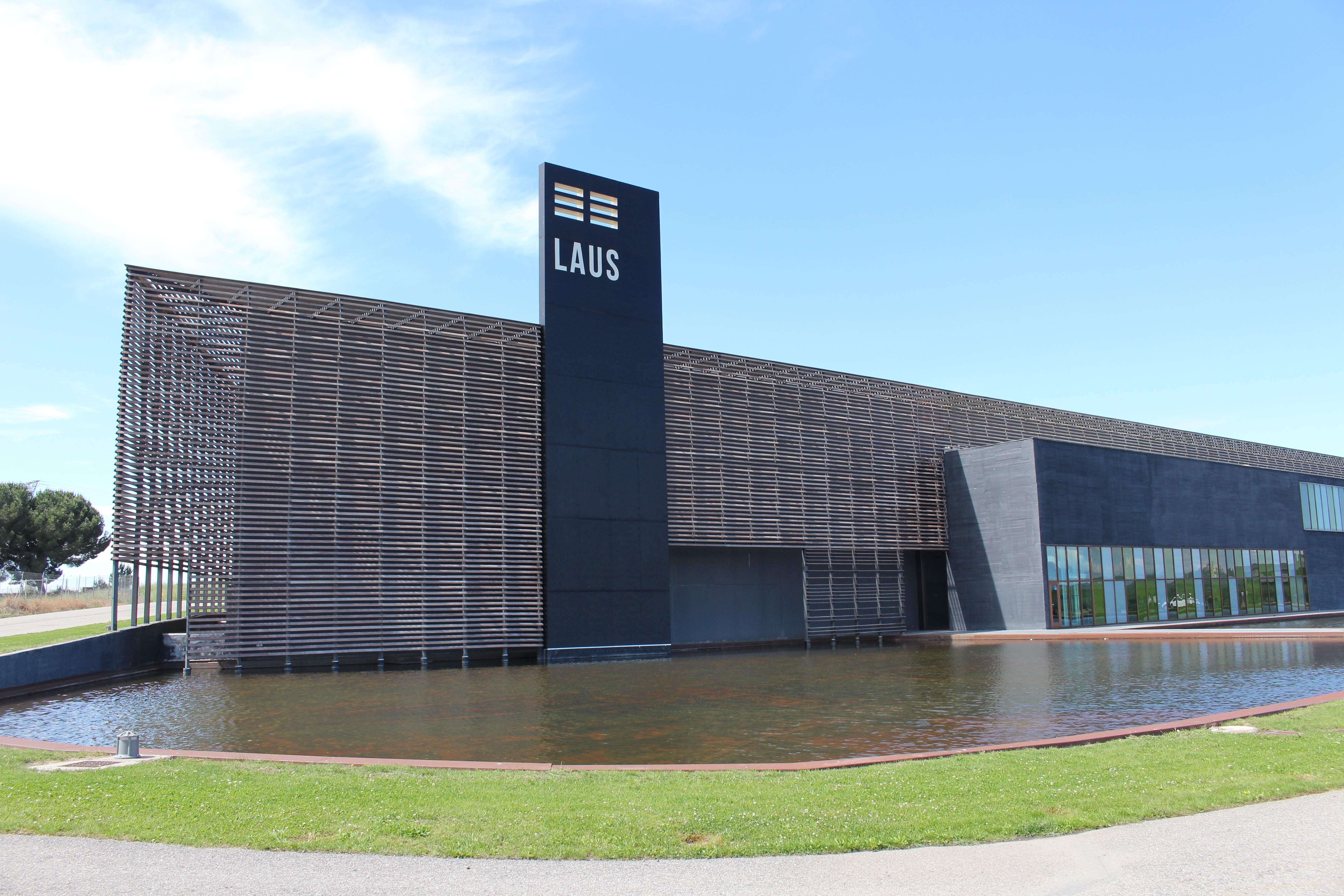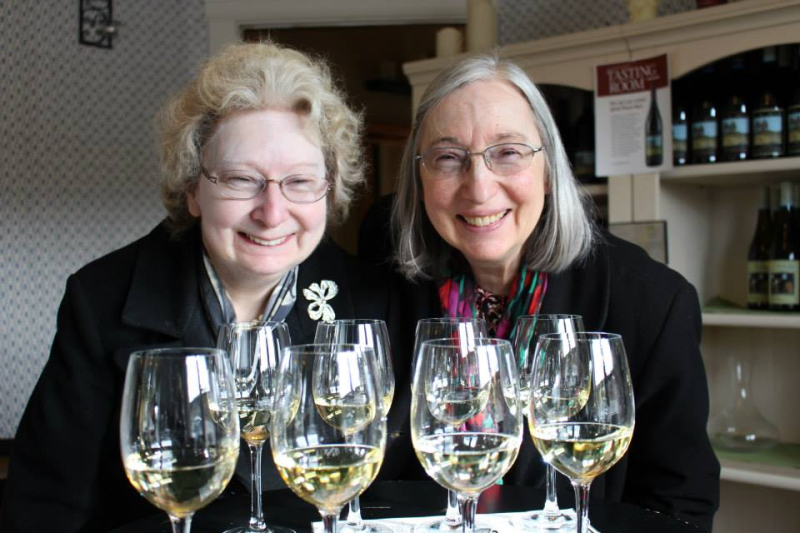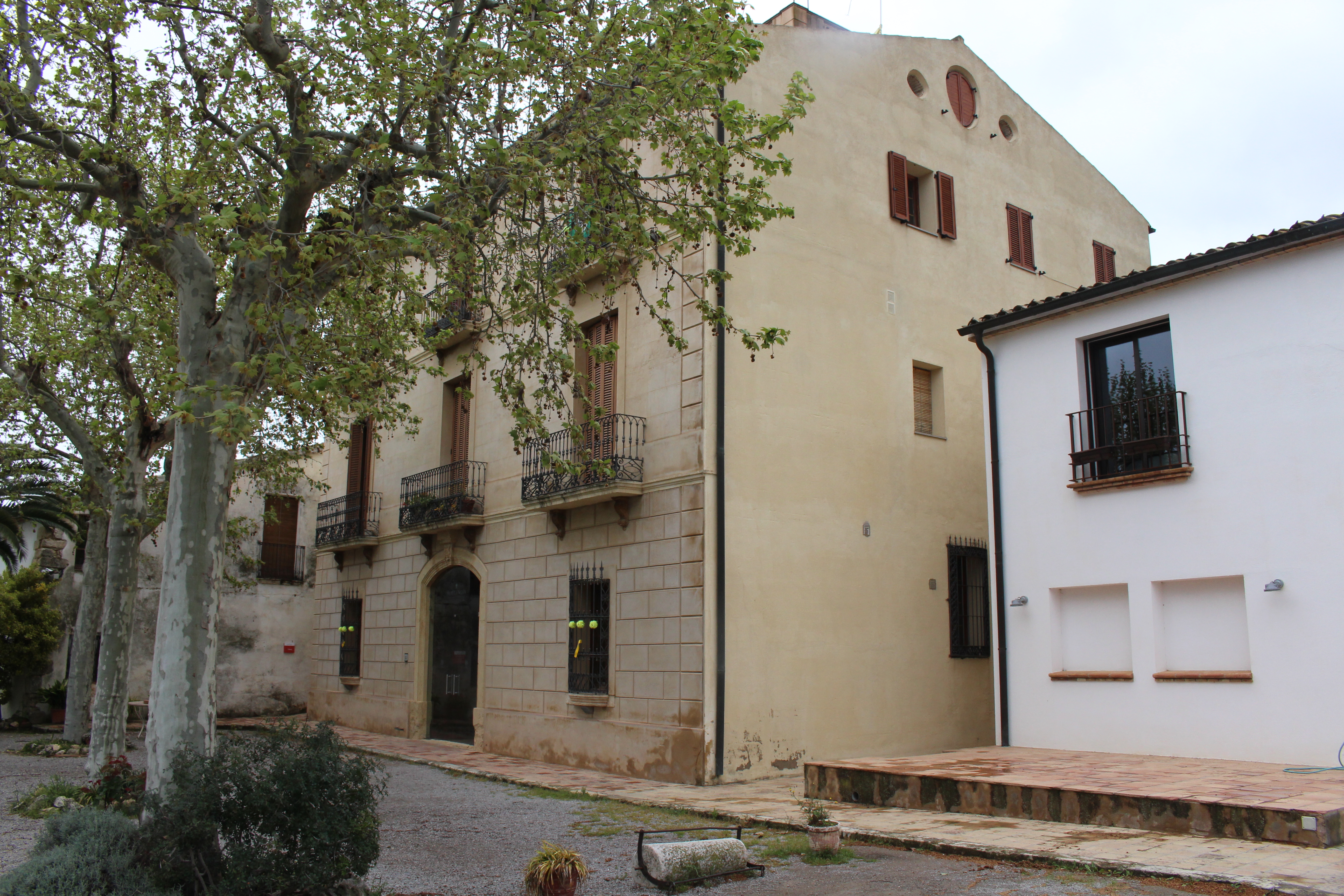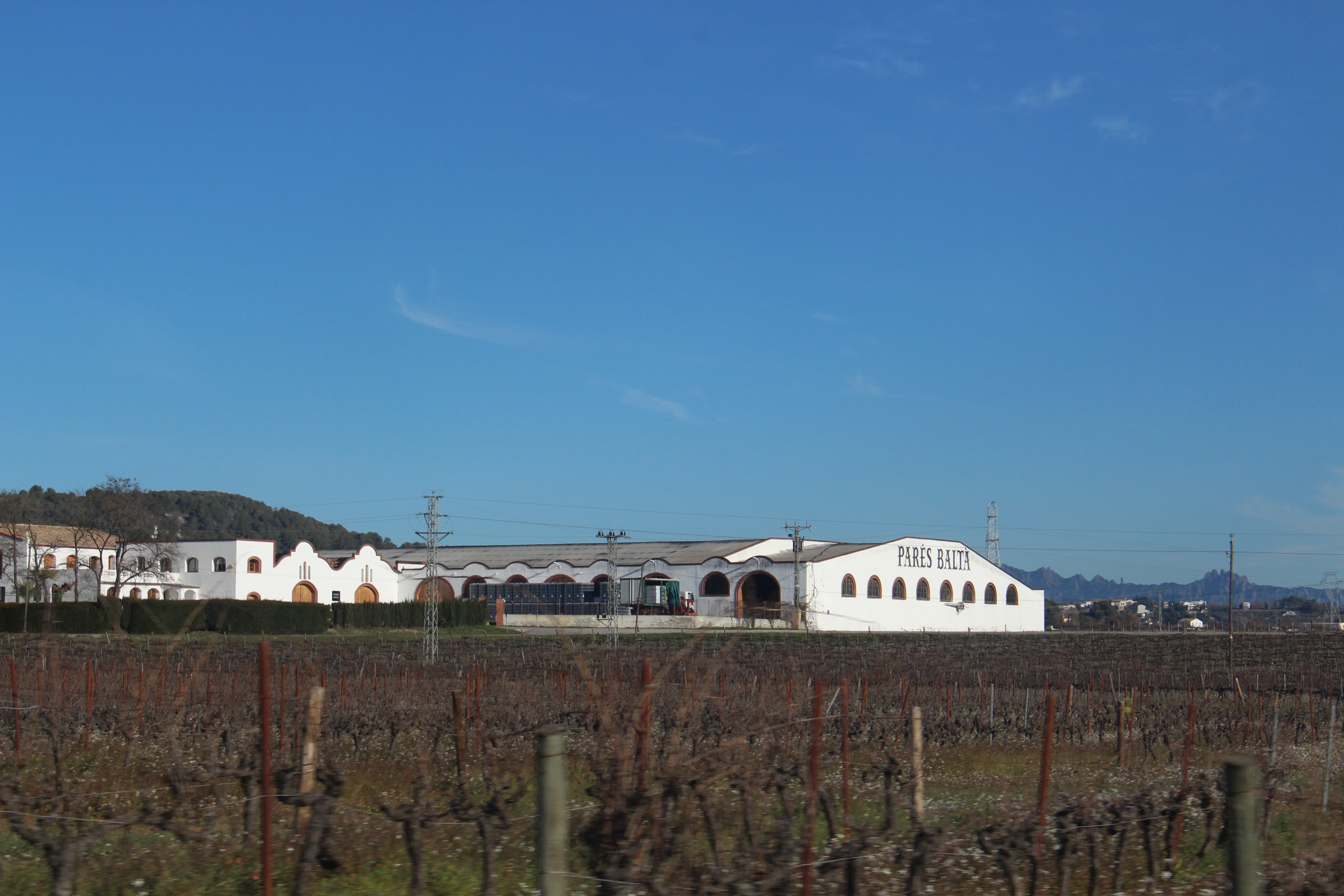
Since I enjoy wine tasting, my daughter, who lives in Madrid, arranged for us to go on a road trip to Somontano, a region near the French border, during a recent visit.
Somontano means “under the mountains,” and when the weather was clear we could see the Pyrenees mountains in the distance, about an hour’s drive from Barbastro, the city where we stayed.

Laus
Laus, which produces 500,000 bottles of wine a year, formerly made high-end wines, but during the Great Recession of 2008, it closed. Recently purchased by another winery in the area, Enate, it now makes mainly fruity young wines. The young wines go from the stainless-steel tanks to bottling, and don’t age in barrels. Laus produces six wines.
The winery is surrounded by rectangular water pools, which help keep the winery cool.
The wines are 13 percent or more alcohol content rather than the usual 11 percent due to how the cold nights and hot days of the region affect the grapes.
We tasted a Chardonnay 2015, a Rosé 2015 made from Syrah, and a Tinto Barrica 2015 made from Merlot and Syrah. The rosé was bright pink, unlike the rosés I’m used to seeing in the United States, which are a darker pink.
The cost of the tour is 6 Euros.

Enate
Established in 1991, Enate produces 3 million bottles of wines a year.
For its high-end wines, grapes are picked by hand from the oldest vines then hand sorted by workers to remove flawed or unripe grapes.
The winery building was designed by the Madrid architect Jesús Manzanares.
Enate has 1,112 acres of vineyards. It doesn’t use herbicides or synthetic chemical products to control pests or disease. Instead, Enate carries out preventive treatments with natural products. The fertilizer for the soil is organic.
For its wine labels, Enate uses photos of artwork produced by Spanish artists. A gallery at the winery exhibits more than 100 paintings with the associated wine labels alongside. Among the artists are Antonio Saura, Antoni Tapies, Eduardo Chillida, Rafael Canogar, José Manuel Broto, and Víctor Mira.
We tasted a Chardonnay 2015, a Rosé 2016 made from Cabernet Sauvignon, and a Cabernet – Cabernet 2011.
The cost of the tour is 7 Euros.

Sommos
Established in 2008, Sommos produces 5 million bottles of wine annually.
It’s a beautiful winery, a modernistic creation of steel and glass designed to resemble the Pyrenees by the architect Jesús Marino Pascual.
Sommos has an experimental vineyard with more than 70 different grape varieties.
Sommos harvests its wines at night so that the grapes don’t begin fermenting when picked. Huge machines straddle the rows of grapes, picking the grapes and destemming them. To avoid crushing the grapes, unloading is carried out by vibration. Gravity is used to move the grapes, grape juice, and wine around the winery, avoiding the damage caused by the traditional use of pumps.
Sommos has 887 acres of vineyards. No pesticides or chemicals are used in the production of wine.
It’s grapes for red wines include Tempranillo, Cabernet Sauvignon, Merlot, Syrah, Grenache, Moristel, Parraleta, and Pinot Noir varieties. For white wines, it uses Chardonnay and Gewurztraminer varieties.
We tasted a Gewurztraminer 2016 that spent four months in the barrel, a Grenache 2015 that spent 12 months in the barrel, and a Merlot 2014 with an alcohol content of 14.5 percent.
The cost of a tour at Sommos is 10 Euros. You can also arrange a tour of the vineyards riding a horse or a Segway.
I love to go wine tasting in Spain. Several years ago, we visited the la Rioja region in Northern Spain, the largest and best-know wine producing area in the country, which is famous for its red wines. Last year, we visited the Penedes region, an hour from Barcelona. Known for its cava or sparkling wine, we visited the Codorniu, Gramona, and Pares Balta wineries.
In addition to organizing wine tours in Spain, I’ve arranged them in Chelan, Woodinville, Cashmere-Monitor-Leavenworth, Walla Walla, Mount Vernon, Pullman, and Thurston County in Washington state and in Sonoma, Santa Cruz, Temecula, and Amador County in California.
For information on how to plan winery visits, see my article “How to Organize a Wine Tour.”





